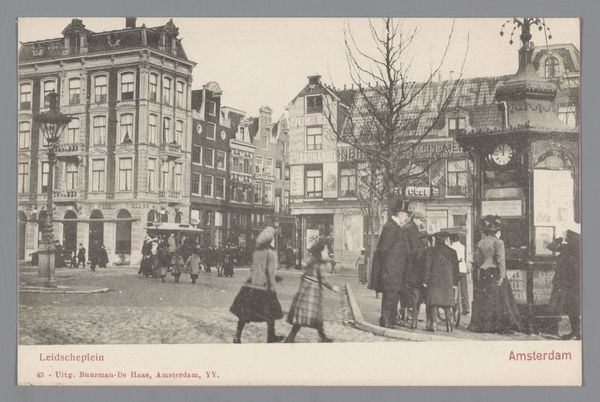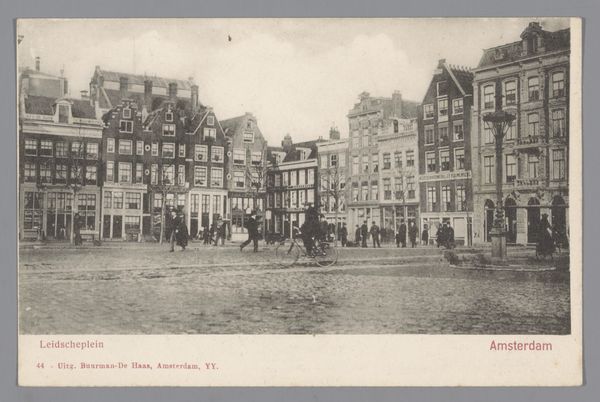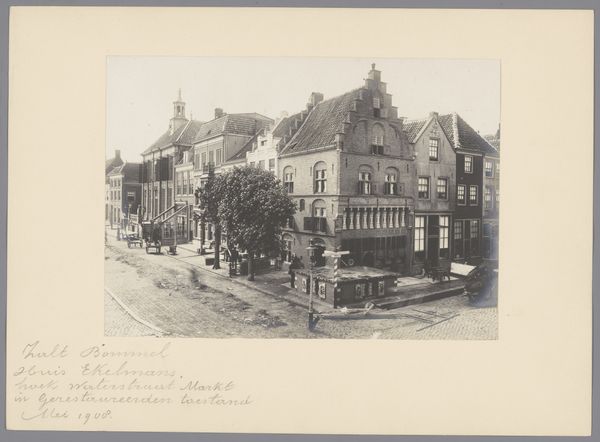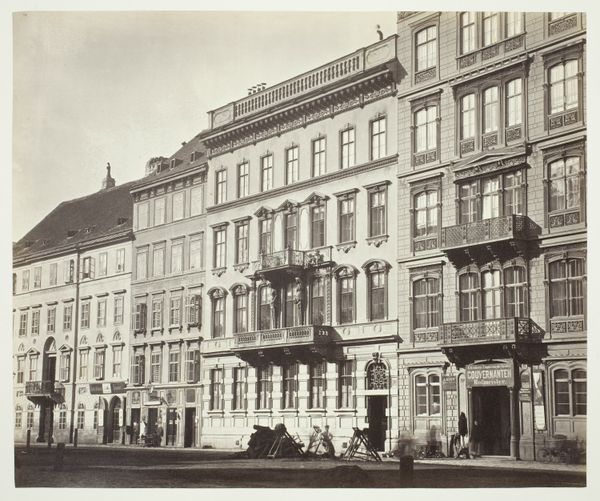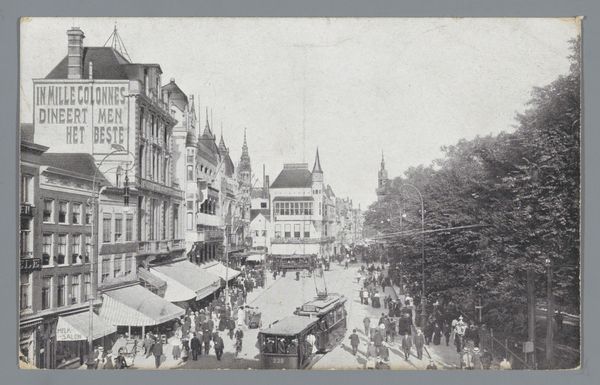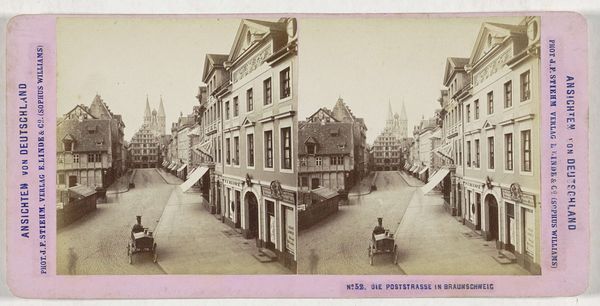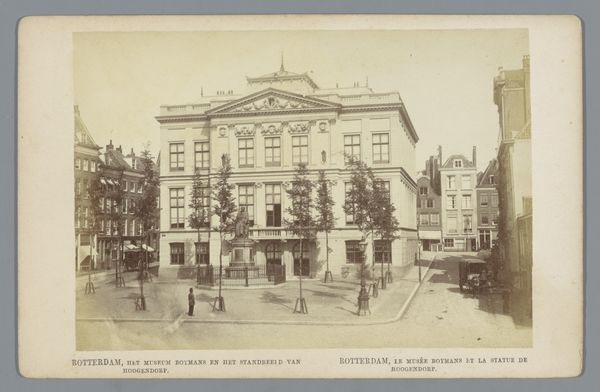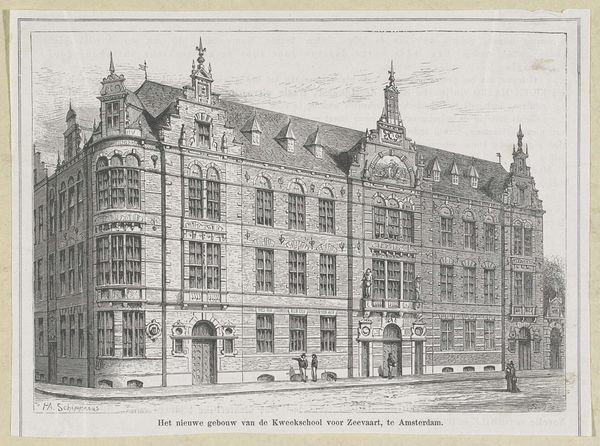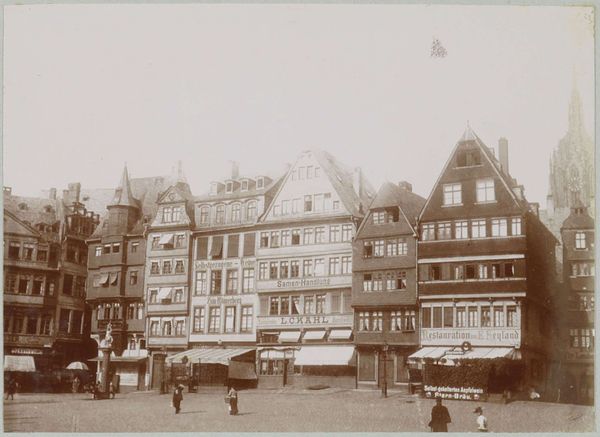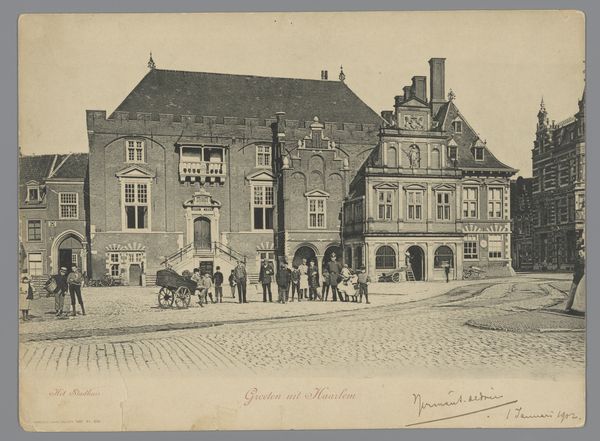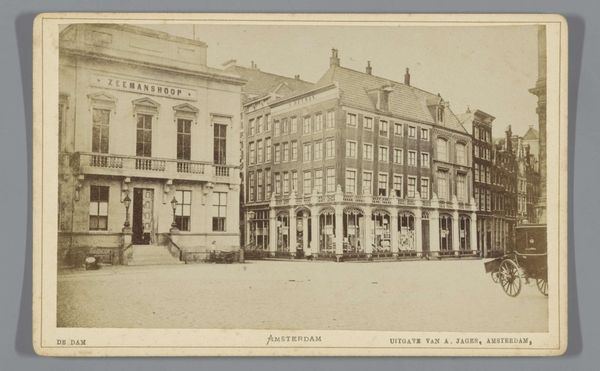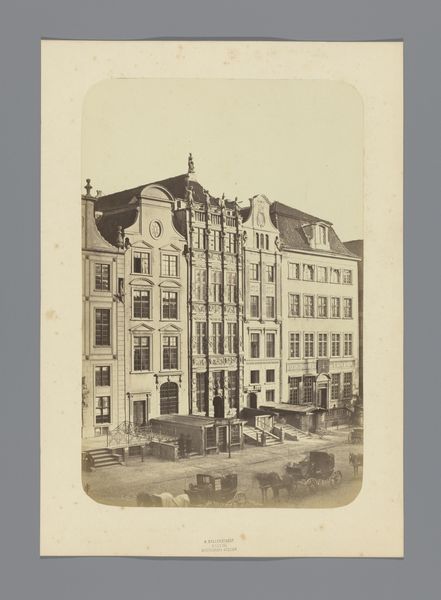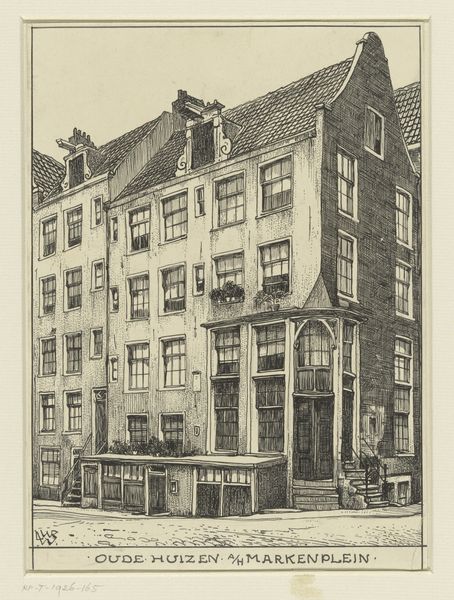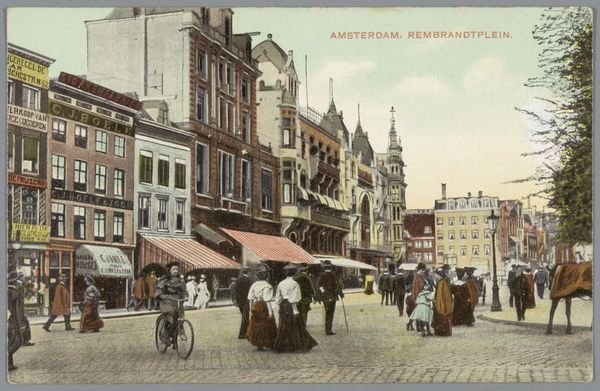
print, photography
#
pictorialism
# print
#
street-photography
#
photography
#
cityscape
Dimensions: height 92 mm, width 141 mm
Copyright: Rijks Museum: Open Domain
Curator: H.S. Speelman's print, "Amsterdam, Rembrandtplein," possibly from 1906, offers a glimpse into the past, wouldn’t you agree? Editor: Absolutely. The immediate impact is one of serene observation; a kind of pictorialist study in grays. The delicate tonal gradations, from the hazy sky to the intricate architectural details, create a captivating atmospheric perspective. Curator: The composition seems rooted in capturing a city as a cultural subject, emphasizing how spaces of performance and leisure intersected with everyday urban life in Amsterdam during the early 20th century. It evokes questions of social class and access to the arts, as these were turbulent years in which Dutch society struggled to establish voting rights for everyone. Editor: That contextual element certainly enriches the viewing, but it is also essential to notice the structural harmonies in the photograph itself. Note the linear rhythm established by the receding buildings, balanced by the organic mass of the trees on the left. It's a play between order and nature. Curator: Precisely! These spaces, especially around places like the Rembrandt Theater, were locations where different segments of society came into contact. The act of recording the public sphere highlights questions of representation and the democratization of art at the beginning of a turbulent century. Editor: Do you think this could also indicate a more profound concern with issues such as identity or gender roles? Curator: Certainly. During that era, city spaces were progressively traversed by new types of female employees and women activists, who would often confront the gender norms through new behaviors of mobility and socialization in those exact streets and buildings. Therefore, Speelman's photograph becomes a subtle record of these nascent societal transformations. Editor: So, what remains with me, thinking of pictorial qualities like value, line, and mass—combined with insights on the city and the lives within—is the notion that a photograph can be both a historical document and a poetic experience. Curator: I completely agree. It's a reminder that art often holds up a mirror to the society from which it springs. A society struggling to achieve equal civil rights for everyone to this day.
Comments
No comments
Be the first to comment and join the conversation on the ultimate creative platform.
